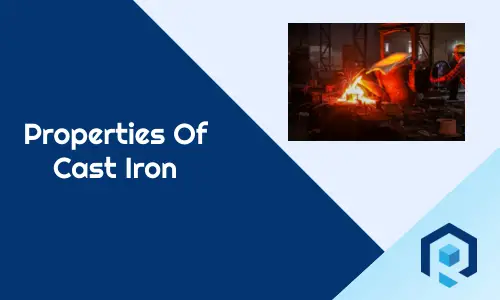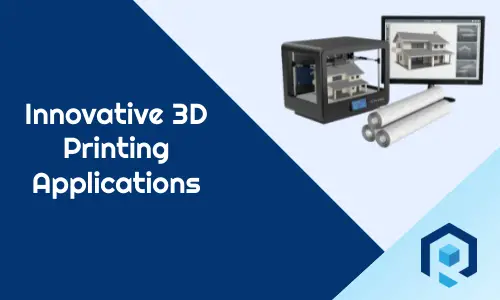No manufacturing process is immune to defects. The same goes true with Welding. Let’s learn in this article about Different types of welding defects, welding defects causes, and remedies.
What are welding defects?
Welding defects are the irregularities that are formed due to the wrong welding process or due to inexperienced welders. Even if irregularities are very minimal but if the shape, size, and quality of the weld are way different than what is expected, it is also called welding defects.
Some amount of weld defects are acceptable if that is under the tolerable limit and do not impact the product function and performance.
Why causes welding defects?
- Wrong welding procedure
- Inexperienced welders
- Metal compatibility
- Environmental issues
Types of welding defects
Welding defects are classified into the following two types
- Internal welding defects
- External welding defects
Internal Welding Defects
These types of welding defects are hard to visualize with open eyes and you need to look into the microscopic structure to discover defects. There are numerous internal welding defects as shown below.
- Weld cracks
- Inclusions
- Blowholes
- Insufficient fusion
Weld Cracks
Weld cracks are serious defects in welding and by any means, it is not accepted. Cracks can be internal as well as external.
Weld cracks are formed due to the excessive stress formed by metal because of the temperature difference and insufficient cooling. A good welder should always consider the number of shrinkage metals might have or else crack will form.
![Welding Defects: Causes, Types And Remedies [PDF ] 1 welding defects](https://www.riansclub.com/wp-content/uploads/2020/02/800px-welding_cracks2342350534946148721.png)
Reason Of Weld Crack
- Residual stress during cooling
- Foreign metal contamination
- Use of hydrogen when welding ferrous alloys
- High welding speed with low current
- Poor weld joint design
Remedies for Weld Crack
- Use proper welding speed
- Remove foreign material from metals
- Check metal compatibility before welding.
- Consider shrinkage of weld metal before welding
- Preheat the metal as required.
Inclusions
Inclusions or slag inclusion is a serious defect in welding. These are foreign material which does get trapped inside the weld or on the top of the weld thus weakening the structure. Slug is basically solidified flux after the weld cools
![Welding Defects: Causes, Types And Remedies [PDF ] 2 welding defects](https://www.riansclub.com/wp-content/uploads/2020/02/440px-smaw_weld_area9013015906712225586.png)
Reason for Slag Inclusion
- Improper cleaning
- Too high welding speed
- Incorrect welding angle
- Too low welding current
Remedies of slag inclusion
- Use proper speed during welding
- Adjust the angle if required
- Remove slag from the previous weld.
- Adjust the current
Blowholes
Blowholes are basically voids or pockets formed by entrapped gas during welding. Some amount of voids are accepted but it compromises the weld strength.
![Welding Defects: Causes, Types And Remedies [PDF ] 3 welding defects](https://www.riansclub.com/wp-content/uploads/2020/02/blowholes.png)
Causes of blowholes
- Excessive fast arc travel speed
- Improper electrode
- Too low or too high current
- Dirty weld surface
Remedies of Blowholes
- Clean weld surface before welding
- Use proper electrode
- Adjust welding speed
- Preheat the weld metal
Insufficient Fusion
This type of weld defect occurs when there is an insufficient fusion between the base metal and the weld metal. This creates a gap under the joint or in between adjoining weld beads. Due to the insufficient fusion, molten metal can not reach all areas of the weld and thus creates the gap. This kind of weld defects weakens the structure.
Causes Of Insufficient Fusion
- Incorrect electrode angle
- Too fast welding speed
- Surface contamination
- Low heat input
Remedies of Insufficient Fusion
- Adjust the electrode angle so that molten metal reaches every corner
- Reduce welding speed
- Clean the metal before welding
- Reduce the disposition rate
External Welding Defects
External welding defects can be discovered by open eyes. Often external welding defects are acceptable up to some extent unless it is affecting the strength of materials. Below are a few external welding defects.
- Crater
- Undercut
- Spatter
- Distortion
- Hot Tearing
- Surface cracks
Crater
The crater is a kind of crack which occurs when the welding arc is broken and molten metal is not available to fill the cavity. Crater occurs due to residual stress imposed by the lack of metal in the cavity.
![Welding Defects: Causes, Types And Remedies [PDF ] 4 Welding defects](https://www.riansclub.com/wp-content/uploads/2020/02/440px-hat_crack8175118878159233334.png)
Reasons For Crater
- High welding speed
- Low current
- Metal contamination
- Poor weld joint design
Remedies Of Crater
- Reduce weld speed
- Preheat the metal
- Reduce impurities
- Good weld joint design
Undercut
The undercut is a kind of groove formation around the weld reducing the cross-sectional thickness of the weld. Due to less cross-sectional thickness, the weld becomes weak and not accepted.
![Welding Defects: Causes, Types And Remedies [PDF ] 5 Welding defects](https://www.riansclub.com/wp-content/uploads/2020/02/440px-welding_undercut6571867419746720767.png)
Causes Of Undercut
- Incorrect electrode angle
- Too high weld current
- Incorrect filler metal
- Poor weld technique
Remedies Of Undercut
- Adjust the electrode angle
- Reduce the arc length
- Reduce electrode travel speed
- Check filler metal compatibility before welding
Spatter
Spatter, as the name suggests is a small particle from the weld that gets deposited on the surface of the weld joint. This is very common in gas welding and sometimes it’s impossible to avoid spatter. However, with a better technique, you can mitigate the defects and create acceptable weld joints. In the below image you may notice small metal all around the surface. Those are spattering.
![Welding Defects: Causes, Types And Remedies [PDF ] 6 Welding defects](https://www.riansclub.com/wp-content/uploads/2020/02/68bbe71b13aadaeefe7b7a94fd6ff2741168896354550573592.jpg)
Cause Of Spatter
- Too long arc
- Surface contamination
- Incorrect polarity
- Too steep electrode angle
Remedies Of Spatter
- Adjust weld current
- Adjust the electrode angle
- Clean the surface before welding
- Use proper polarity
Distortion
Distortion is a result of molten metal shrinkage at the side of the weld joint. It’s not always possible to only melt the area where the weld joint supposed to take place. Right? Due to heat area next to the weld joint also get melted and when it cools causes distortion. The distortion can be of many types as shown below. Distortion can be a severe issue as it affects the part shape.
Types of Distortion
- Angular Distortion
- Longitudinal Distortion
- Fillet Distortion
- Neutral Axis distortion
![Welding Defects: Causes, Types And Remedies [PDF ] 7 welding defects](https://www.riansclub.com/wp-content/uploads/2020/08/welding-defects-1024x576.png)
Causes Of Distortion
- Slow arc speed
- Base metal and weld metal compatibility
- Improper welding methods
- Numerous travel with small electrodes
Remedies Of Distortion
- Weld need to be placed near neutral axis
- Use proper welding sequence
- Reduce the number of electrode travel
- Use an exact amount of weld metal.
Hot Tearing
Hot tearing is similar to cracks but occurs at the edge of weld joints. It occurs due to improper cooling at different areas of the weld joint. Some areas cool faster whereas some areas remain in the molten state thus inducing excessive stress at the edges forming tearing. Tearing is a serious defect and parts are always rejected if this defect occurs.
Causes Of Hot Tearing
- Thermal Contraction
- Liquid pressure drop
- Improper electrode
- Weld metal and base metal are not compatible.
Remedies Of Hot Tearing
- Analyze the cooling pattern of weld and base metal
- Adjust the current as required to heat up base metals
- Use correct size electrodes
- Use proper electrode materials.
Surface Cracks
Surface cracks are different from another internal weld crack in the sense that surface crack occurs on the surface of the weld joint. Those can be easily diagnosed and fixed. The reason and remedies remain the same as any other intern welding cracks.
Conclusion
I hope I have enough welding defects mentioned in this article. Welding technology is evolving extensively nowadays and thus numerous new defects are also explored. But the reason and remedies are more or less similar to what I mentioned in this article.
I am open to your suggestion and if you come across any other welding defects then please let me know in the comment section. I will be happy to include that in the article. If you have any questions and want to have a quick response from us then please join our Facebook Group and you will have an answer to your question in no time.
You may also like to have a welding defects pdf file for your future reference. The link for the same is given at the end of this article.
Frequently Asked Questions
What is called welding Defects?
Welding defects are irregularities that are formed due to improper welding methods, wrong electrodes, incorrect current input, welding speed, and many other factors. Not to forget that an inexperienced welder can create defects in welding even though all other factors are not contributing.
Does welding defects means rejection of parts?
Not all type of defects contributes to part rejection. Few defects which contribute to the weakening of part strength are usually lead to part rejection.
What are main welding defects?
Cracks
Undercut
Hot tearing
Short Fusion
Spatter
Distortion
Blowholes



